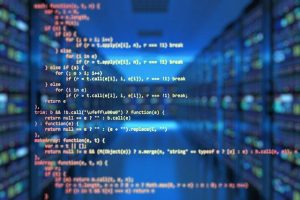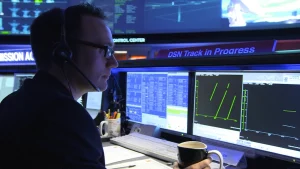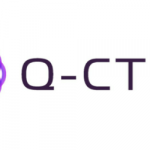Quantum News Briefs August 11: World Fund Takes Lead in $128 Million IQM Round, Quantum Money Could Make Energy-Sapping Blockchains Obsolete, World’s Fastest Two-Qubit Gate in 6.5 Nanoseconds & MORE

Quantum News Briefs today opens with World Fund’s lead in $128M IQM round, followed by how quantum money could make energy-sapping blockchains obsolete, news of world’s fastest two-Qubit gate in 6.5 nanoseconds & MORE.
*****
World Fund Takes Lead in $128 Million Round for IQM
 World Fund, a new climate VC fund is taking the lead in a $128 million round for IQM, with hopes the Finnish quantum computing company will one day deliver carbon cuts by the megatonne. Harri Weber of TechCrunch+ is the author of recent article discussing this investor, IQM and climate control. Quantum News Briefs summarizes; original article here.
World Fund, a new climate VC fund is taking the lead in a $128 million round for IQM, with hopes the Finnish quantum computing company will one day deliver carbon cuts by the megatonne. Harri Weber of TechCrunch+ is the author of recent article discussing this investor, IQM and climate control. Quantum News Briefs summarizes; original article here.
Quantum computing trades the bits of conventional computers for quantum bits, and in theory, quantum machines may be better suited for solving some highly complex problems in fields like chemistry and machine learning. IQM argues its tech could also move the needle on climate.
IQM projects its quantum computers will help mitigate greenhouse gas emissions in as soon as the next three to five years “for some of the early use-cases.” The company says it is already “working on novel approaches to develop better battery solutions with a leading car manufacturer,” and it plans to spend its new funds on further research in battery tech, quantum chemistry and other areas. IQM cautioned in an email to TechCrunch that “scientific breakthroughs don’t follow a set timeline.”
The German VC said it exclusively backs tech with the potential to remove “100 million tonnes” — that is, 100 megatonnes — “of carbon from the atmosphere yearly by 2040.” Other investors in the latest round include the EU’s European Innovation Council and Tencent. The deal brings IQM’s post-money valuation near the $1 billion mark, a person familiar with the matter told TechCrunch.
*****
Quantum Money Could Make Energy-Sapping Blockchains Obsolete
 Quantum money is a form of currency that employs the strange laws of quantum mechanics to ensure that it cannot be copied but at the same time can be easily verified. Discover Magazine has published a e Physics arXiv Blog that Quantum News Briefs summarizes below.
Quantum money is a form of currency that employs the strange laws of quantum mechanics to ensure that it cannot be copied but at the same time can be easily verified. Discover Magazine has published a e Physics arXiv Blog that Quantum News Briefs summarizes below.
The properties of quantum money make it an ideal medium of exchange, just like ordinary cash, but without any risk of counterfeiting. The idea was first developed by the physicist Stephen Wiesner in 1970 using the notion that any attempt to measure an unknown quantum state inevitably destroys it. By comparison, the process of measuring a known quantum state preserves it.
Wiesner’s quantum money formulation has one drawback. The verification process can only be performed by a trusted authority, like a central bank, which otherwise keeps the details of the quantum states secret. But the emergence of decentralized currencies like Bitcoin and Ether have focused attention of monetary systems that require no centralized control.
Now Andrey Khesin and Peter Shor at the Massachusetts Institute of Technology and Jonathan Lu at Harvard University, both in Cambridge, have found a way to create quantum money that anybody can verify, making it entirely decentralized without needing a blockchain to securely record transactions.
Their work is interesting with significant implications. One of the disadvantages of decentralized cryptocurrencies is the huge energy cost required to encrypt and maintain the blockchain. For Bitcoin, this is currently thought to be more power than the entire country of Argentina consumes and is clearly unsustainable in the long term.
Quantum money has the potential to work without this overhead. It is also naturally anonymous, just like cash, which will be a popular property.
*****
Japanese Research Team Executes World’s Fastest Two-Qubit Gate in 6.5 Nanoseconds
 A research team from the Japanese Institute for Molecular Science has now made a great stride in quantum computing, making it happen with the help of a two-qubit gate. Monica White of Digital Trends described the findings and in her recent article summarized below.
A research team from the Japanese Institute for Molecular Science has now made a great stride in quantum computing, making it happen with the help of a two-qubit gate. Monica White of Digital Trends described the findings and in her recent article summarized below.
The team successfully managed to execute the world’s fastest two-qubit gate in just 6.5 nanoseconds. In the process, the researchers had to overcome some of the limitations linked to this kind of technology. However, there’s a catch — the method they used might be tricky to replicate in a less research-based environment.
The researchers used lasers in order to drastically cool down two atom-qubits made out of the element Rubidium. The temperatures hit close to an absolute zero, going as low as −273.15 degrees Celsius. These atoms were then secured within a micrometer of each other through the use of optical tweezers. Then, they utilized a laser to manipulate the qubits at 10 picoseconds intervals. A picosecond is the equivalent of one trillionth of a second.
The rubidium-atom qubits that were used by the researchers to execute this ultrafast qubit gate must be cooled close to absolute zero in order to work. Doing so can be possible in special cases, but realistically, most organizations would turn to a different solution until this can become easier to manage. On the other hand, even if this technology won’t become the go-to one day, the research is important as scientists continue to try to determine where exactly the future of computing lies.
Quantum Networking: Defining the Next Wave of Networking and Communications

Ed Fox, CTO of MetTel, recently wrote about quantum networking and how it will transform communications in TechRepublic. Quantum News Briefs summarizes below.
Researchers in the Netherlands recently engineered a significant breakthrough, enabling quantum information to move across vast distances between two (even three) quantum computers via the use of an intermediary node. This takes place by manipulating a quantum theory known as entanglement – whereby entangled particles replicate and enable quantum information to be transported across vast distances instantaneously and between more than two machines.
It’s safe to say that quantum computing will struggle to realize its full potential without effective introduction and use of quantum networks – but what will this actually look like in the world of communications?
At its essence, quantum networking will fundamentally change how data is sent and received. If managed effectively, quantum networks – also known as the quantum internet – could drive a metamorphic change to the way the internet operates, carving out the true network of the future.
We’d live in a world with the potential for almost zero latency – it would only be present when processing at the send/receive end of the network. Added to this, quantum networks would almost entirely eliminate physical network infrastructure. In other words, the copper and fibre optic cables that traverse our planet would become redundant.
Perhaps most tangibly, any quantum information transported between two quantum computers (or more) becomes completely inaccessible during its journey, meaning no-one can intercept it. Picture a world where your data is 100% protected… unconditional security. It could spell the end of cybercrime as we know it.
Researchers also predict quantum networks and computers will help accelerate the invention of new medicines and critical vaccines, as well as support even more advanced use of artificial intelligence.
In communications, quantum devices will enable higher performance for sensors, such as high-accuracy GPS. We may also witness the birth of the quantum cloud.
*****
Sandra K. Helsel, Ph.D. has been researching and reporting on frontier technologies since 1990. She has her Ph.D. from the University of Arizona.



















